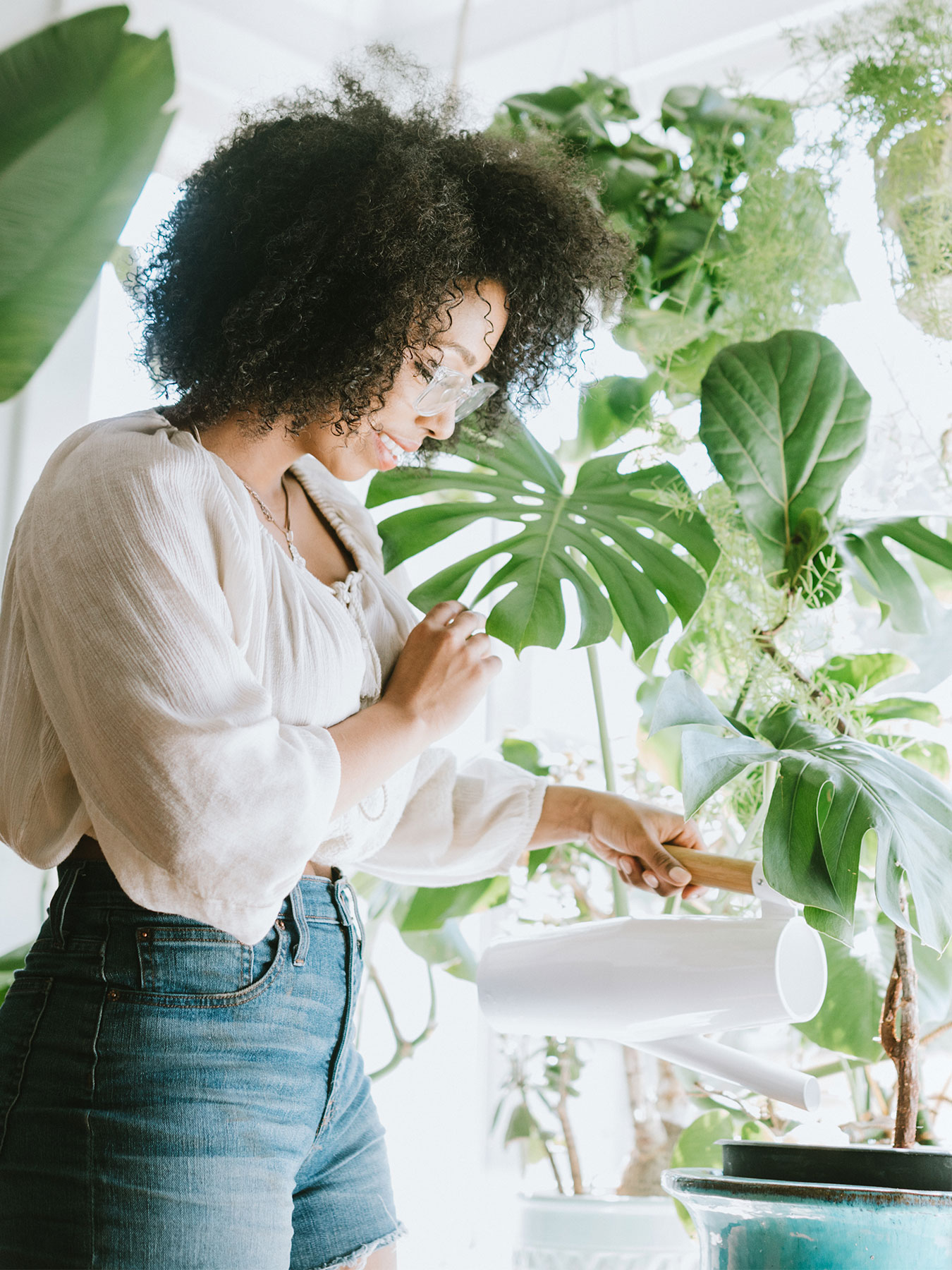Houseplants are often underrated. These living powerhouses are a surprisingly cost-effective way to elevate a room’s style, bringing color and visual interest that never clashes with your décor. They can also bring a sense of warmth and life to almost any space. And some even remove toxins from the air!
What’s even more impressive is how small an investment (in both time and money) it takes to reap all these wonderful benefits. The key is finding the right plants for your space and situation.
Consider these 6 factors to select the best houseplants for you:
1. Your Goals
To pick the perfect houseplant, first, be clear on just why you want one. Are you looking for a burst of bright color? Something tall that draws the eye upward? A bit of natural serenity? Or is your main goal to help clean the air? Understanding your goals for this greenery will help you to quickly narrow your options.
2. Your Plant-Care Skills
Be honest with yourself—how green is your thumb? Being new at this, or even having a few dead houseplants in your past, doesn’t mean you can’t succeed. But you may need to skip delicate flowers like orchids at first, and stack the deck in your favor with heartier plants like English ivy, rubber tree plants, and heartleaf philodendron.
3. Your Schedule
Even people with the greenest thumbs won’t keep plants alive if they’re never there to care for them. If you travel frequently or know that you won’t have much time to devote to plant care, look for options that don’t require regular check-ins, like ficus, aloe vera, and jade plant.
4. Your Outdoor Climate
The weather outside can have a larger impact on indoor houseplants than you might expect. In places where there is a lot of temperature variability, you’ll want to consider how switching on heat or air conditioning (or between the two) might impact the air directly around your plant. If you know the air temperature and humidity will change frequently, consider options like spider plants because they can thrive in spaces that range from 60 to 75 degrees.
And if there isn’t much humidity at all outside, you’re likely to have dry conditions inside too, so opt for plants that don’t need much moisture, like peace lilies.
5. Your Interior Space
A crucial houseplant selection point will be the light and space available in the precise places where your plants will live. Study the amount of sunlight available during the course of a day, and narrow your choices to those that are well adapted to that light level.
Then consider the size of the space you’re filling, and make sure you select a houseplant that can thrive in containers of the needed size. For instance, money plants are great for tiny spaces, but a cast iron plant will require a larger pot and quite a bit of room to grow.
Finally, if you’re concerned about indoor air pollution, bring in houseplants that remove common toxins from the air. Popular options include English ivy, pothos, and dragon trees.

6. Who’s Living There?
Pretty though they are, there are some plants that aren’t always healthy to have around. If you have small children or pets — even well-behaved ones — pick plants that are known as non-toxic. Also avoid tall, tree-like plants that can become irresistible climbing attractions and tip-over hazards.
Once you’ve defined these essential requirements, the fun part can begin—looking for a plant (and a pretty pot) that feels just right for you.

Zazzle’s Lifestyle Expert is here to help create life’s best & most important moments. Discover unique ideas and endless inspiration to create meaningful memories with family, friends and your community.




